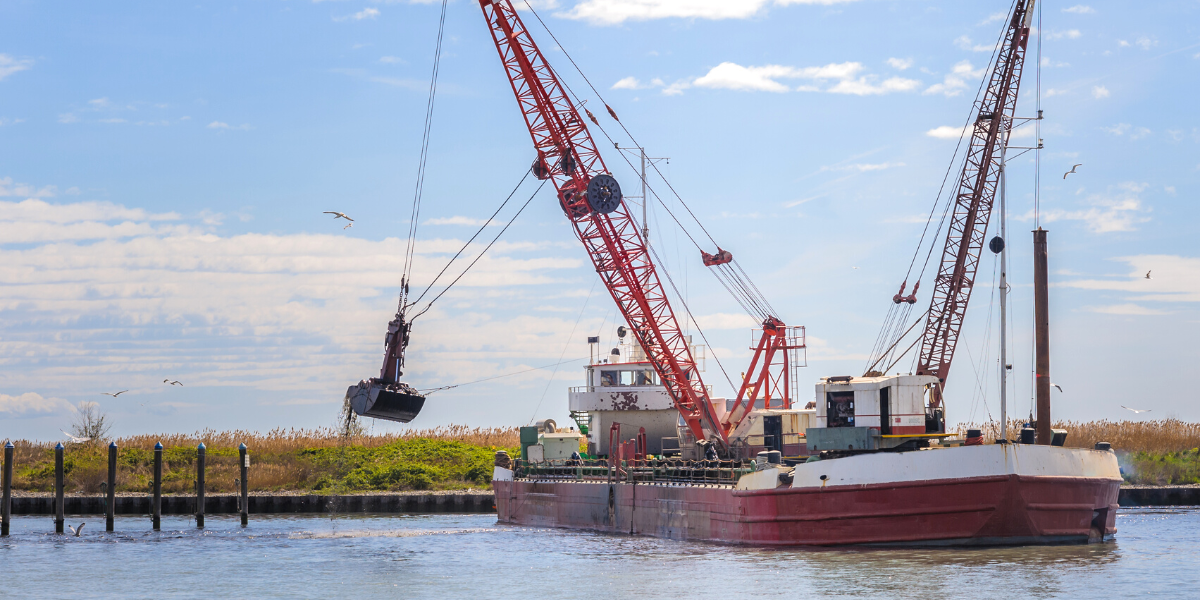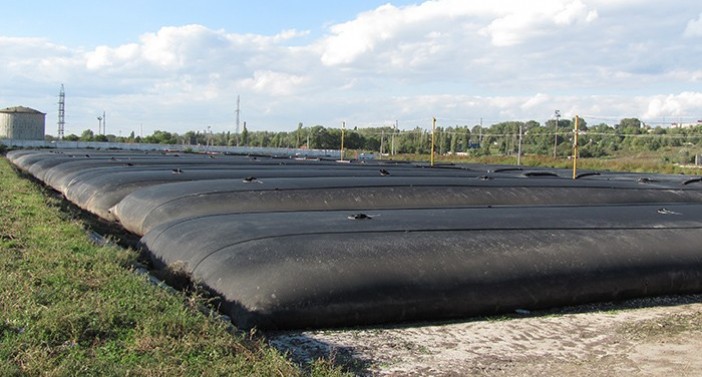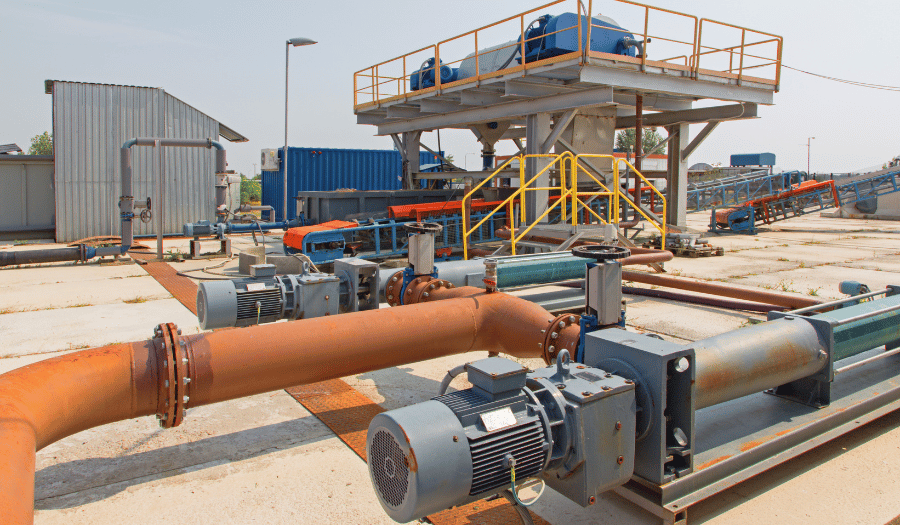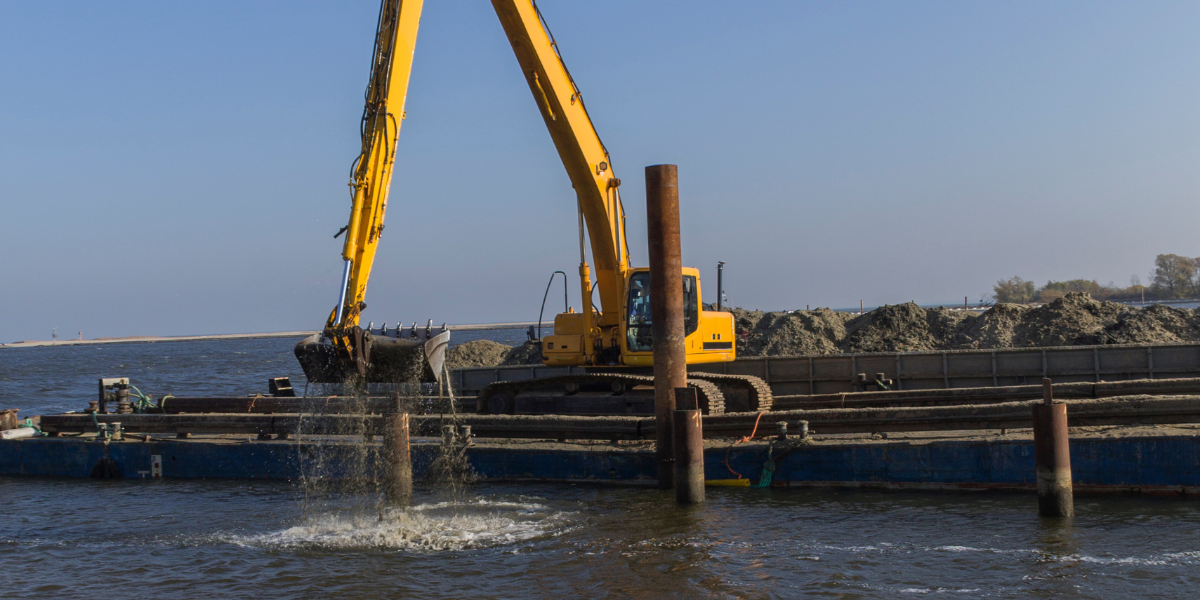5 Benefits of Dredge Dewatering
Dredging can be a necessary but costly process, so it's important to minimize environmental impacts. One way to do that is by using dredge dewatering...
4 min read
U.S. Aqua Services Nov 8, 2023 1:48:41 PM

The changing environment affects every industry, especially coastal construction projects. Tools like dredging are useful in speeding projects along, but they could be better for the planet. In this blog post, we discuss a few ways construction industry leaders can enhance resilience and sustainability in coastal construction when dredging. A few changes would make a positive difference for the environment in its most pressing time of need.
Understanding the role of dredging’s environmental impact is vital to better chart more eco-friendly solutions within the construction industry. When companies dredge in coastal areas, these adverse effects can occur.
Extra sediment and potential pollution fill waterways over time. Currents pull sand and soil from other locations, making channels unusable for teams operating ships or transporting equipment.
Dredging is a necessary process to remove the unwanted debris in waterways. However, the industrial vacuums clearing the banks of coastal areas also remove some underlying soil. Beneficial microorganisms go with the removed sediment, leaving a changed biome behind.
Creatures and organisms don’t just depend on underwater sediments for plant life or oxygenation. They also thrive in the pre-disposed composition and decaying matter within those natural floors. Removing the sand or soil means the creatures lose their food sources and the microorganisms contributing to the habitat.
It can take a minimum of two to four years to restore the microbial diversity in underwater biomes. Striving to reduce this impact leaves the food chain and environment in a better state.
Animals can become accidental dredging victims. The process occurs underwater, where silt and sand make everything murky for the team members operating the machinery. People sometimes don’t realize animals are in the way, leading to crushed fish and sea turtles.
Given how global warming is already threatening global animal species, reducing the animal population further is another way to weaken the environment. Revising dredging strategies will minimize this accidental planetary harm for construction teams striving to make their work processes greener.
The process of dredging is necessary, but it could become more sustainable. These efforts will make the coastal construction tool more resilient and better for the planet.
Construction companies can partner with local or national organizations to reuse dredged sediments. The organizations take soil, sand and any sediment free of toxins to use them in other locations. Intensified natural disasters due to climate change may wash mud away from marshes and wetlands. Dredged materials can fill those gaps, restoring the environment.
Companies may even reuse sediments in areas close to the original dredged location. Agricultural field owners often purchase the materials because dredged mud can contain helpful microorganisms for cover crops.
Taking unnecessary or extra soil from coastal regions and delivering it where they can improve the planet is a direct way to make dredging more sustainable.
Investing in a large dredger may seem like a smart business opportunity, but it presents a few environmental problems. Oversized equipment may remove more sand or soil than necessary when working on smaller project sites. If a team rents their dredger, they could match each project’s size to the most efficient machinery.
This step is also helpful for construction companies already renting their dredging equipment. Comparing site size with machinery size reduces the odds of paying for oversized dredgers.
Smaller dredgers use less gas. The direct reduction in CO2 emissions per project would make every build greener. It’s something to consider when making coastal construction projects more sustainable.
Renting provides another benefit — it would reduce annual machinery maintenance costs to almost nothing. The maintenance costs wouldn’t be the construction company’s responsibility. The rental company would likely pay for their own equipment repairs or get the money from their insurance policies.
There are numerous dredging methods offering various benefits. Selecting a single method for every build won’t allow room for the nuanced needs of different local biomes.
A hydraulic suction dredger may be too powerful for a small waterway. The smaller areas may benefit more from clamshell mechanical dredgers. It depends on the size of the area requiring sediment removal and how much sediment needs to go.
Water injection dredgers are another option if underwater soil or sand removal isn’t feasible. The self-supporting system could flush unneeded sediment away with the surrounding water. It may be the most environmentally friendly option for crews working in small areas or waterways with numerous aquatic creature species relying on the sediment mostly remaining in place.
Clients could request to build their homes with sustainable materials like plastic turned into floors or cork walls, but dredging may work against their eco-friendly goals. It sometimes harms the wildlife in the area while constructing a house that’s good for the planet, ultimately holding any construction work back from its green potential.
Construction leaders can research the aquatic wildlife in the areas needing dredging. Learn when they typically have their mating or hatching seasons and reschedule projects to wait until they finish. It’s better for the ecosystem if crews avoid disrupting their reproductive cycles and endangering their species.
Migrating animals could also become accidental dredging victims. Monitoring migratory patterns of fish, waterfowl and other animals in the coastal area will reveal better times of year for dredging various locations.
If rescheduling isn’t possible for a project, the research can still guide teams in making more eco-friendly decisions. They’ll know which aquatic creatures to watch for while dredging and which species are most at risk from the work. Other dredging techniques could better serve a project if teams know which animals are around their worksite and what machinery would least impact their biomes.
Dredging can become more resilient and sustainable for coastal construction teams. These options make the necessary tool greener. Consider trying options like matching machinery size to a project’s scope or sending dredged sediments to areas in need. Every effort makes a difference in improving the planet’s well-being.
If you’re in need of dredging equipment rentals for your next major project, you can trust U.S. Aqua Services to provide you with the high-quality equipment and staff you’ll need to make sure your project is a success.
Contact U.S. Aqua Services today to schedule your on-site consultation or to rent your dredging equipment.
U.S. Aqua Services was created to support the dredging process in advancing commerce and responding to its many challenges. To accomplish this, our dredging company assembled an exceptional group of experienced individuals and a diverse inventory of dredge equipment and excavator dredge pumps.
We offer dredging equipment rental services so you can have access to the latest and greatest in dredging technology without having to pay to maintain it, transport, and store it, along with dewatering services.
With an emphasis on mobility, dependability, durability, diversity, efficiency, and safety, our dredging rental company can ensure that our different types of dredging systems are easy to move through any terrain and can work in the most rugged and remote environments. Our multi-function hydraulic systems are built with jetting and mechanical options that can efficiently move loose sediment or stiff layers of clay.
US Aqua services also and maintains a ready fleet of Amphibious Marsh Equipment capable of completing projects in some of the harshest and most remote environments. U.S Aqua is also the dealer for Louisiana of the amphibious vehicle Fat Truck. No matter the size or scope of the job or the remoteness of your work location, you can rely on Fat Truck’s industrial off-road utility vehicles to get the job done right.

Dredging can be a necessary but costly process, so it's important to minimize environmental impacts. One way to do that is by using dredge dewatering...

Dredging is a vital activity for maintaining waterway navigability, environmental cleanup, and resource extraction. After dredging, the material...

Are you seeking assistance with dredging? As a leader in expert dredging and wetland services, we are dedicated to providing tailored solutions that...